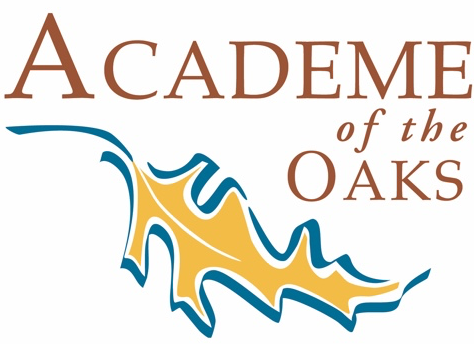Project-based learning
Academe students engage in experiential and project-based learning, working individually and collaboratively, analytically and creatively, to bring academic “subject matter” to life. History and language, mathematics and science—these are made present and internalized through active, material experience.
Project Week
Academe’s Project Week throws the schedule out the window, mixes students from all grades into new groups, and challenges the students to generate creative responses to an overarching theme. Project Week may seem a radical departure from our daily routine, but it springs from our core belief that education should be collaborative and experiential.
At the beginning of each school year, the faculty proposes a theme—Beloved Community, Stewardship, Reimagining the Public Sphere, etc.—and the students, randomly assigned to working groups with one teacher, produce creative responses to the theme. Each group chooses its own direction and crafts its own product. The teacher may provide suggestions and resources, but the teacher’s ultimate goal is to help the students realize their own creative vision.
Students have interviewed refugees and transcribed their stories, researched human rights, mapped the watershed, filmed students speaking all the languages represented in the school community, designed and produced a quilt, and created theatrical performances. Project Week does disrupt our classroom schedule—a welcome change for students and faculty!—but it does not fundamentally alter our teaching. Project Week helps to develop students’ ability to think and act creatively and independently, taking into the community and accelerating a process already well-established in the classroom.
Real learning occurs when students are engaged in more than one way—when the curriculum speaks to the whole human being.
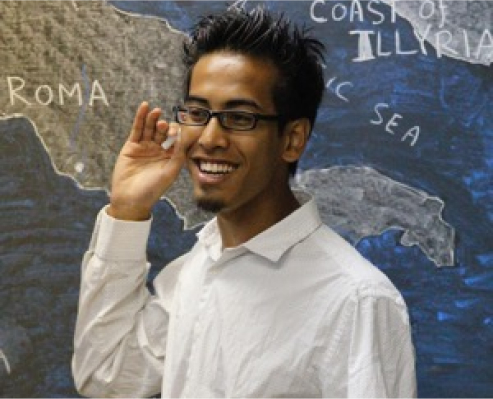
ancient civilizations
During the Ancient Civilizations block, tenth-graders trace the development of civilizations from the nomadic, hunter-gatherer tribes of the Paleolithic period through the rise of major civilizations of the river valleys. Students investigate the development of agriculture, trade, maritime technologies, and writing, along with the impact of climate and geography on these societies. As a culminating project, students in small groups invent a civilization, and, using the core course concepts as a guide, describe the evolution and rise of the civilization over several thousand years. The groups create complex mythologies for their civilizations, establish geographic conditions that enhance and impede growth, create reasonable political and religious hierarchies, and even develop original alphabets and languages. Each group presents “artifacts” from the civilization it has created; classmates infer characteristics of the civilization from its artifacts.
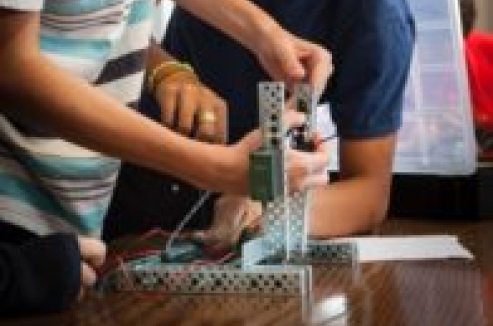
mechanics
Sophomores focus on the laws of force and motion during their Mechanics main lesson block. They begin with Galileo’s Dialogue on Two New Sciences, the original “thought experiment” on falling bodies, and they proceed to the study of Newtonian mechanics and the designing and building of their own projectile launchers. Students calibrate the parabolic arcs of their launchers and compete in a spirited contest to land projectiles on a three-foot-diameter target. Students construct model bridges which they weigh and test for load-bearing strength. Students practice vector analysis in the the context of real-life structural problems, and at the end of the block, all are budding engineers.
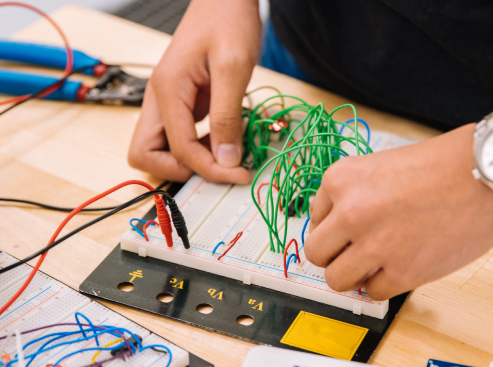
Thermodynamics
What is the difference between heat and temperature? How is heat converted to work? In what ways are pressure, temperature, and volume related to one another? Why do some objects at room temperature feel cold while others feel warm? All these driving questions are answered through experimentation in the course of freshman-year Thermodynamics. Every student builds a “heat engine” to demonstrate the conversion of heat to work. Every student crushes a can with air pressure. Every student performs calorimetric experiments to elucidate the relationship between mass and temperature change. Every student performs an experiment to visualize latent heat. Every student performs a calorimetric experiment to determine the specific heat capacity of an unknown metal. By the end of the block the students can tell you why water is sprayed on orange trees if a frost is coming. Do you know?

project geometry
Tenth grade students study Euclidean (“plane”) geometry, which is grounded in the “parallel postulate” that parallel lines never meet. In the eleventh grade, students revisit Euclid’s work and ask, “What would geometry teach us if the parallel postulate did not hold?” The idea that parallel lines meet at infinity is the basis of projective geometry, a broad discipline of which Euclidean geometry is a subset. The applicability of projective geometry is apparent in art: Renaissance artists conceived and employed a point of projection (a “vanishing point”) where parallel lines met at a chosen horizon, bringing a three-dimensional appearance to two-dimensional art. In projective geometry, students continue to explore the synthesis of aesthetics and mathematics that is an essential component of the Waldorf mathematics curriculum.
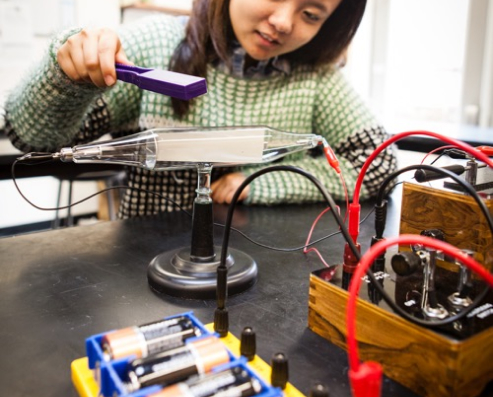
Electricity and Magnetism
Academe’s historical and phenomenological approach to teaching the sciences embodies Emerson’s counsel. Students derive the concepts and laws of chemistry and physics from their own observations and analysis. In “E&M”—junior-year physics—students experiment with magnets and electrical apparatuses to explore the complex relationships of electricity and magnetism. Each student researches a topic or phenomenon of his (or her) choice and presents the results of this research to the class. Students are encouraged to demonstrate phenomena in the classroom when such demonstration is feasible: this can be very exciting! Academe students have disassembled cathode ray tubes; they have built solar panels, van de Graff generators, induction coils, Jacob’s ladders, electric guitar pick-ups and stomp boxes, speakers, electrostatic water drop generators, and metal detectors. Trial, error, and tenacity are the hallmarks of successful experimentation—and the essence of Academe’s project-driven science curriculum.
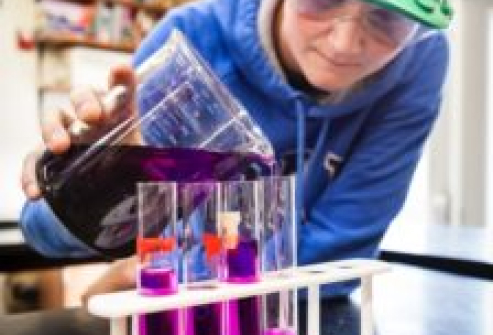
biochemistry
Zika, “mad cow disease,” CRISPR, HIV, Alzheimer’s, Naegleria, tissue engineering, DNA-computing—the list goes on. Students in the senior biochemistry class are given a hefty task: “Teach yourself something!” They spend four weeks researching biochemistry-related topics of particular interest to them, writing and rewriting their research papers, discussing the topics with Academe teachers experienced in scientific research, then teaching what they have learned to their classmates. The power of senior biochemistry lies not only in the subject matter (distinctly college-preparatory), but in its contribution to the students’ personal development as scholars and active engagement with matters of import.
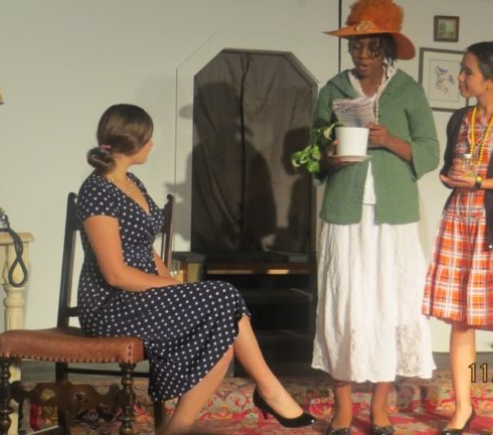
The Plays
The Class Play is a time-honored Waldorf tradition, and is an example for project based learning and collaboration. The tenth-grade play in the fall and the twelfth-grade play in the spring are the culmination of an intense, four-week collaboration demanding a variety of skills and unequivocal commitment from every member of the class. In the tenth grade, the play block is a class-unifying experience; in the twelfth grade, it is a summing-up, a meaningful piece of the process of concluding the high school journey.
In four weeks, students audition for their roles, learn lines and blocking, build a set, source costumes and props, install theater lighting, learn to use lighting and sound boards, and perform their play for the community. The class play is an artistic endeavor, a team effort, and a logistical challenge. Each student fills multiple roles—as actor, stage manager, set designer, carpenter, painter, lighting or sound technician, wardrobe manager, or property manager. In recent years, students have mounted productions of Flowers for Algernon, The Matchmaker, Up the Down Staircase, and The Night Thoreau Spent in Jail.
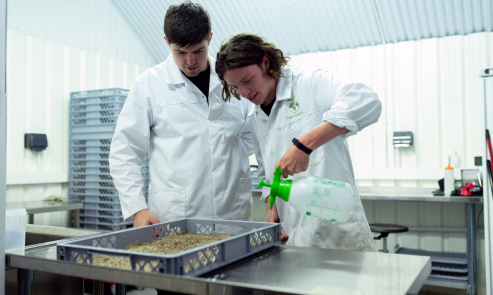
capstone projects
Each Academe senior conceives, designs, and executes a Senior Project—a significant independent and long-term endeavor demanding initiative, sustained focus, independent research, creativity, communication, collaboration, organization, and leadership. The Senior Project is an opportunity to learn and grow in an area of particular interest to the student, and to demonstrate the accumulated learning and growth of the four-year high school career. It is a real-world, real-time, adult experience, a consummation and a stepping stone.

senior internship
In conjunction with the Economics main lesson block, each senior participates in a two- to three-week internship in a local non-profit or for-profit organization, becoming acquainted with the practical, day-to-day operations of “real-world” enterprise. Students have elected to intern in a variety of organizations and environments, including restaurants, banks, law offices, labs at Georgia Tech and Emory University, museums, and stores.
LEARN MORE ABOUT OUR CAPSTONE PROJECTS
Want to learn more about our rolling admissions process and take the next step to learn if Academe of the Oaks is right for your child?
146 New Street
Decatur, Georgia 30030
404.405.2173
